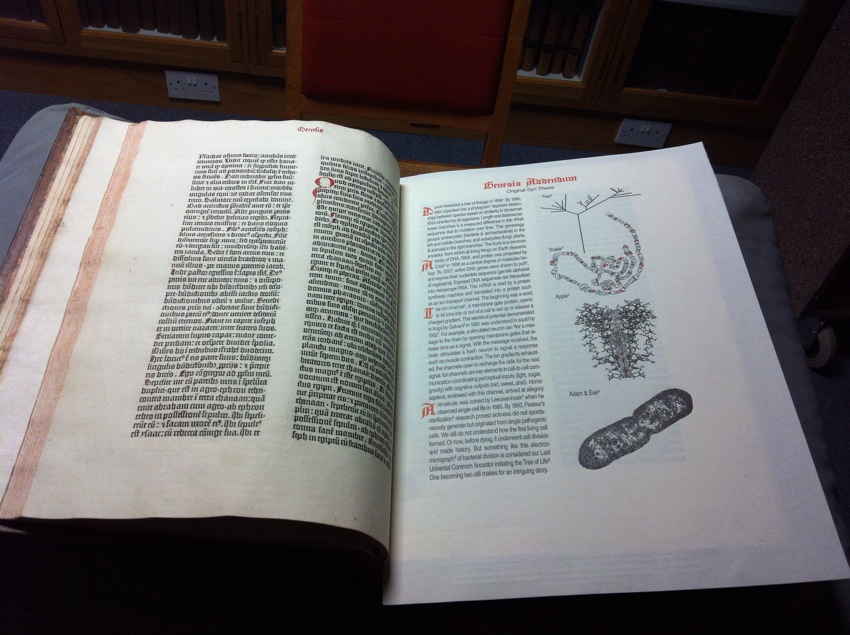 On August 18, I had an 11 am appointment with Jill Whitelock, Head of Special Collections at Cambridge University Library. I left London at 8:30 and arrived at a very wet and rainy Cambridge at 10:30.
On August 18, I had an 11 am appointment with Jill Whitelock, Head of Special Collections at Cambridge University Library. I left London at 8:30 and arrived at a very wet and rainy Cambridge at 10:30.
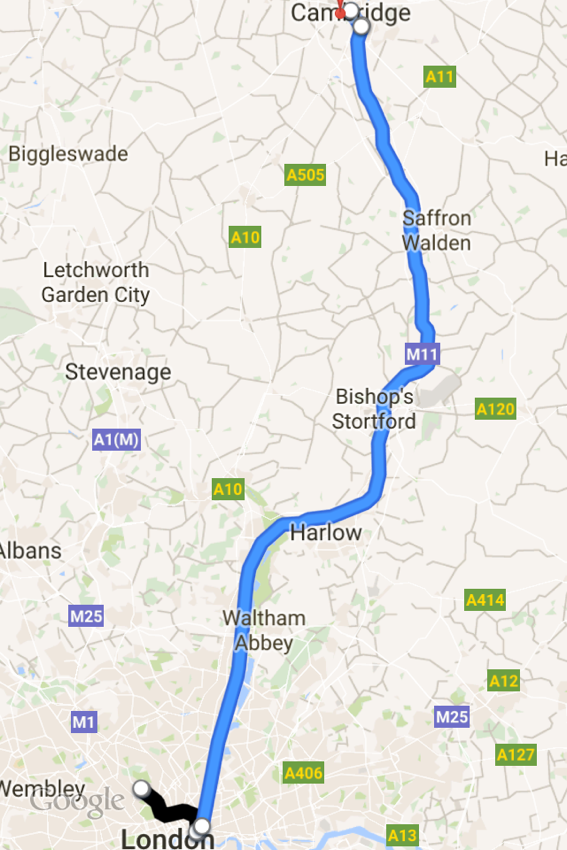 I happily caught a cab to the library designed in the 30s with some kind of geometrical art nouveau – can I even say that with such a brut feel?
I happily caught a cab to the library designed in the 30s with some kind of geometrical art nouveau – can I even say that with such a brut feel?
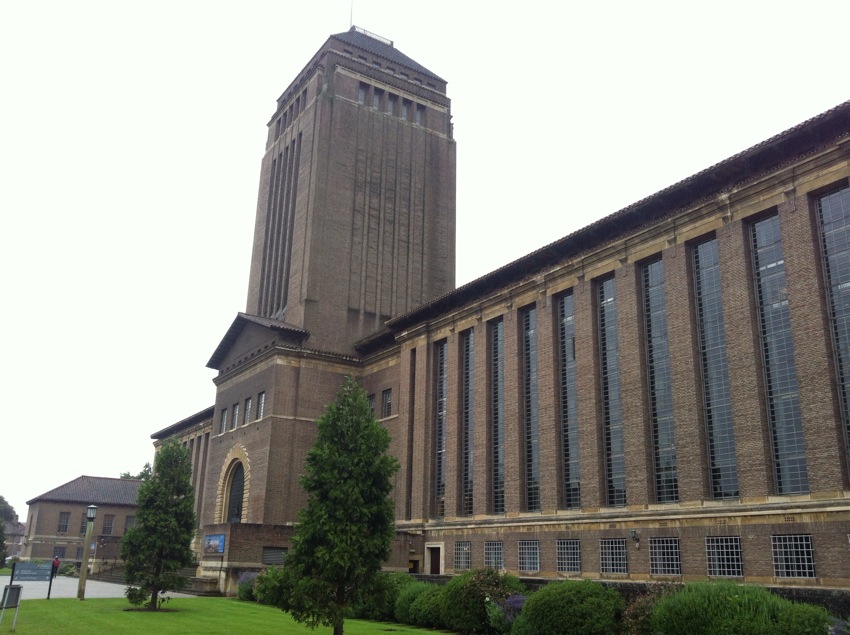
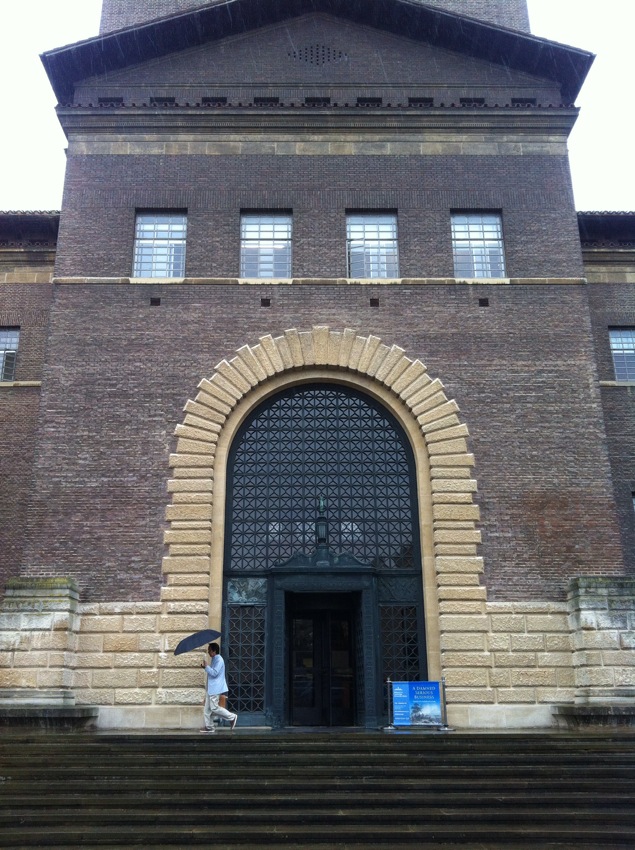
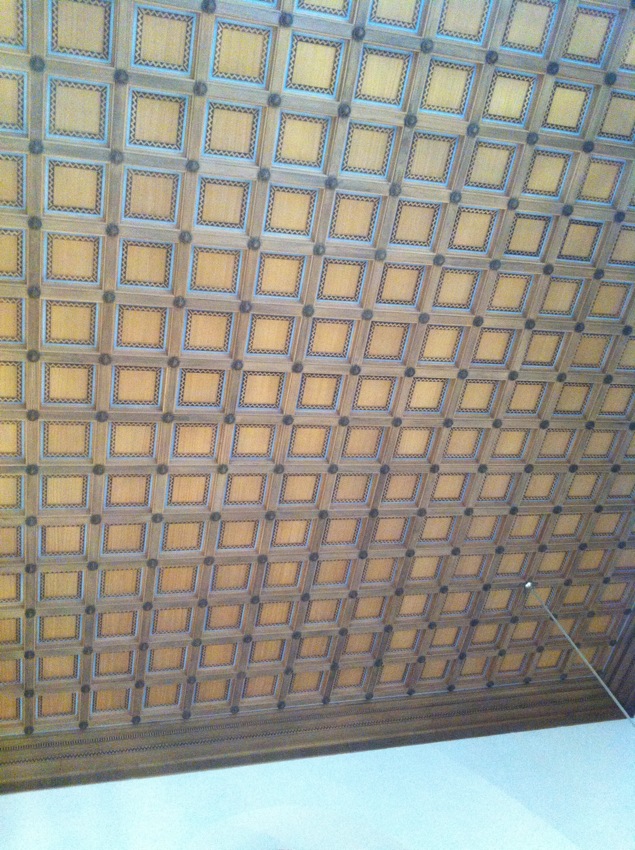

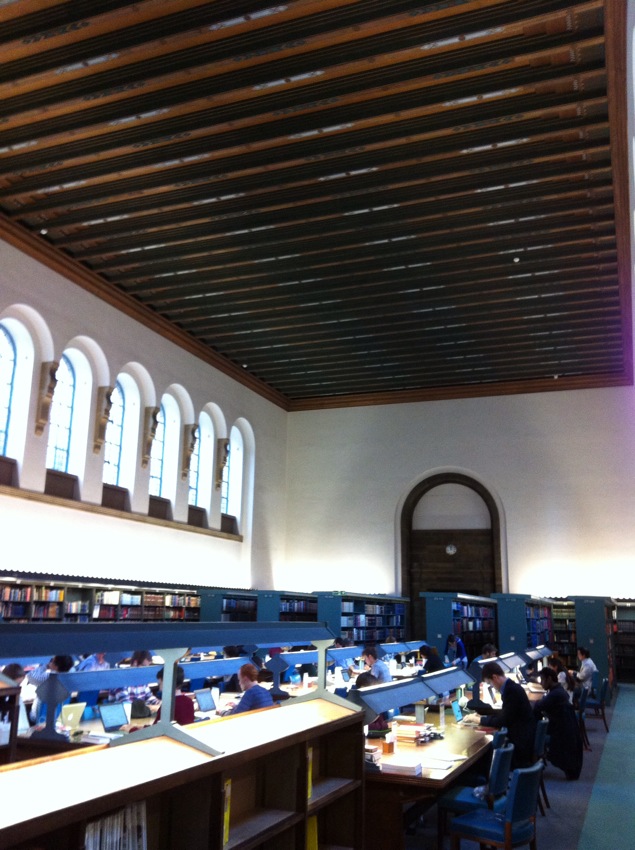 Jill said Cambridge acquired their copy of the Gutenberg in 1933 from Arthur William Young of Trinity College.
Jill said Cambridge acquired their copy of the Gutenberg in 1933 from Arthur William Young of Trinity College. 
 Their copy of the Gutenberg has been illuminated and rubricated so prettily.
Their copy of the Gutenberg has been illuminated and rubricated so prettily. 
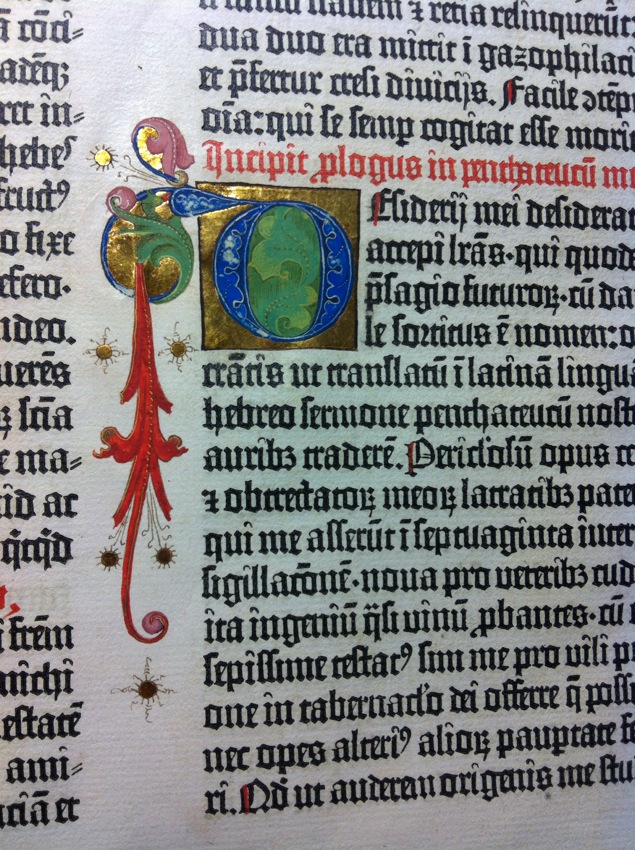 Here is Genesis.
Here is Genesis. 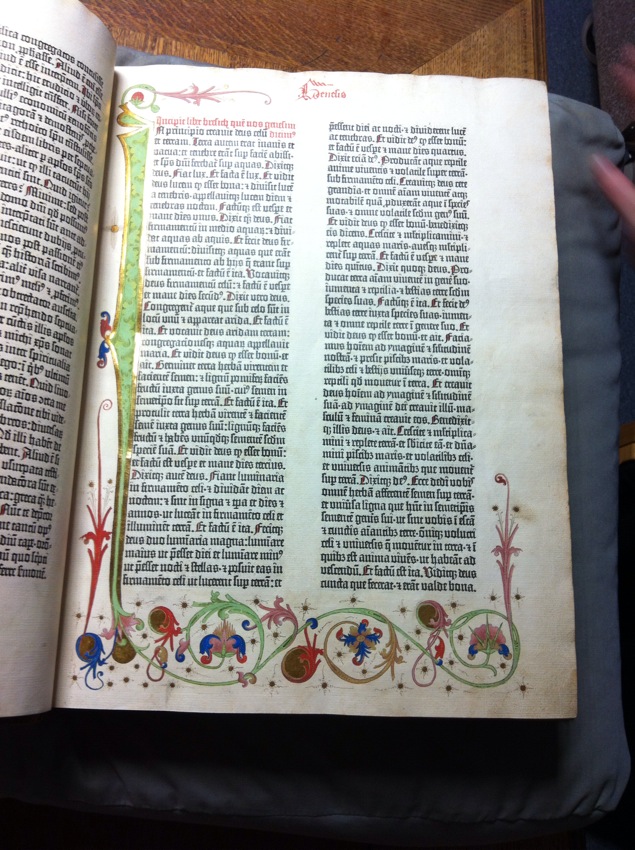 I love the little strawberry embellishment in the top left corner of Genesis! I am always so shocked by gestures of simple sweetness. I love that little berry traveling through time to feed my eyes.
I love the little strawberry embellishment in the top left corner of Genesis! I am always so shocked by gestures of simple sweetness. I love that little berry traveling through time to feed my eyes.  Jill noted little marks at the edge of the text. These were discovered to be re-pagination marks from a subsequent edition.
Jill noted little marks at the edge of the text. These were discovered to be re-pagination marks from a subsequent edition. 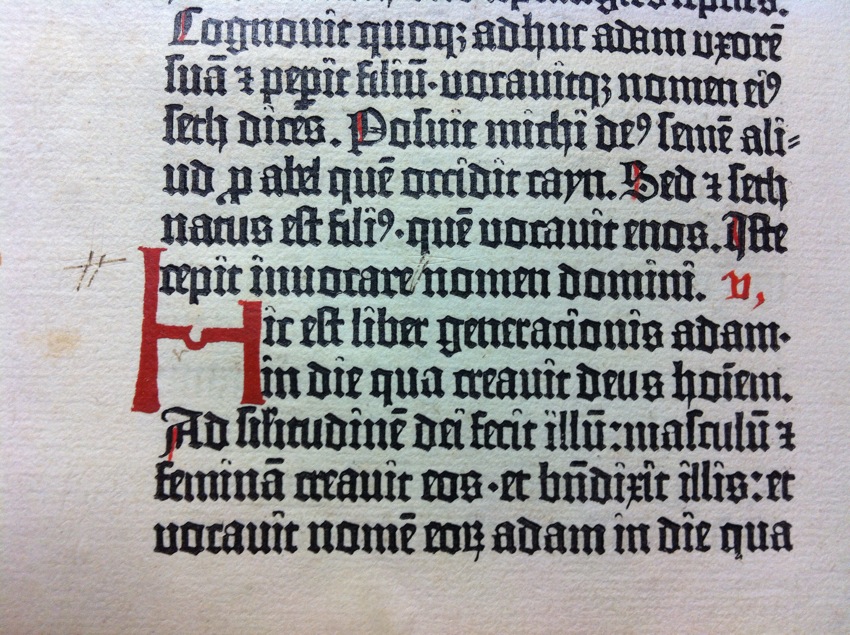 (See the hashtag-like mark on the left margin of line 6. And the double slash between words two and three of that line.)
(See the hashtag-like mark on the left margin of line 6. And the double slash between words two and three of that line.)
Who could recreate Gutenberg’s insane Textura letter collection anyway? They say he had a rediculous number of E’s (and every other letter with incremental fattening & squashing) so he could perfect his word spacing AND left and right justification! He really was a genius of integrative concept and implementing detail.
I asked Jill to share her favorites in the collection. Her first response was a first edition of Dante. She loved it for the quality of the printing, irregularity of spacing between letters, and the beautiful illumination. She noted the evolving cycle of illustrations depicting heaven and hell. Her favorite was a simple depiction of Dante and Beatrice floating on a background of stars.
Another favorite was a bible she liked showing people for a particularly tactile experience. I misheard her say it quivered (she said something else neither of could recall correctly but she liked the use of the word). It is a 16th c. book of sermons bound for Elizabeth I. It is bound in crimson velvet and silver thread with an impressed and gilded edge. She loves showing it to people because when they pick it up, they immediately connect with it as an object -they feel the contrast of the hard silver thread restraining the red velvet. She likes how it connects people today with an experience of others in history in a very immediate way.
Perhaps that is also why Jill let me addend their Gutenberg, physically! 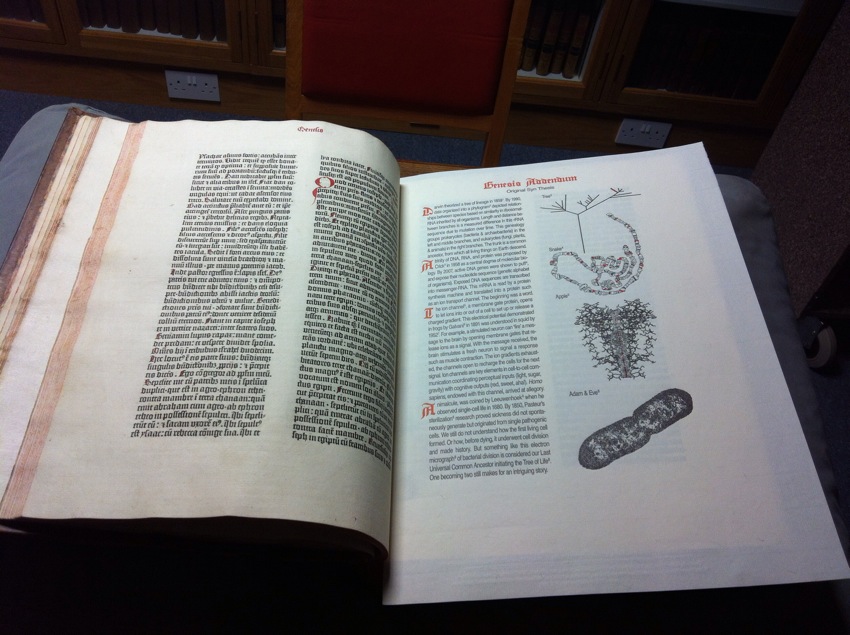 For a photo op only, but a picture tells all my words in this case! Left is the end of the chapter of Genesis in the Cambridge copy of the Gutenberg Bible with Hubay #22. On the right is my Addendum, Edition 35.
For a photo op only, but a picture tells all my words in this case! Left is the end of the chapter of Genesis in the Cambridge copy of the Gutenberg Bible with Hubay #22. On the right is my Addendum, Edition 35.
Thank you Jill for a spectacular ending to this suite of deliveries. One might say my neurons quiver.
Etymology of quiver: “to tremble,” late 15c., perhaps imitative, or possibly an alteration of quaveren (see quaver), or from Old English cwifer- (in cwiferlice “zealously”), which is perhaps related to cwic “alive” (see quick).
As of September 9, 35 Addendum delivered, 27 formally accepted, 2 rejected, and 6 pending review!
